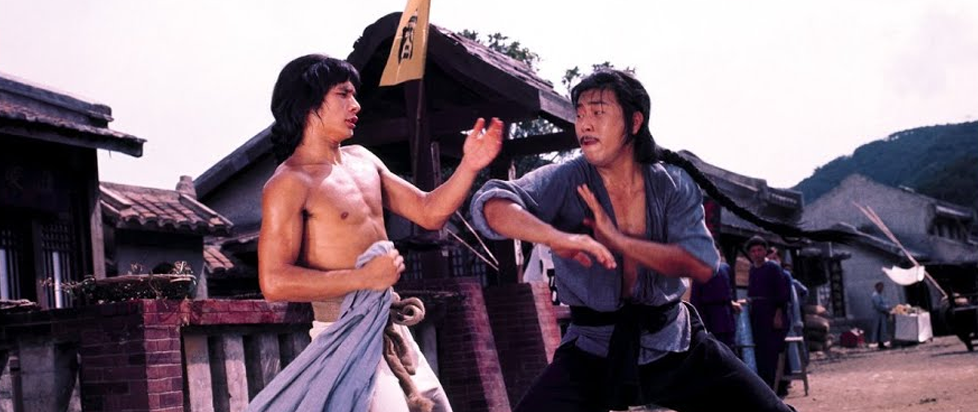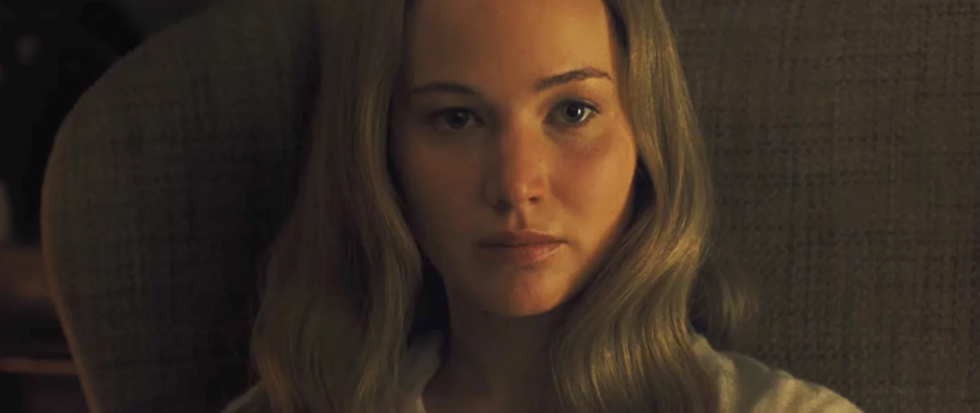
Good Kung Fu Part One: Shawscope Volume One from Arrow Video
Way back when I first saw The Five Deadly Venoms – very nearly my first Shaw Bros. film and the only movie in this collection I had ever seen before sitting down with this set – I compared it to a Hammer gothic with people doing kung fu in place of monsters. The movies in the Shawscope Volume One collection from Arrow Video (mostly) bear that out, even if there is actually also a monster before all is said and done.
What that means is simply this: my critical apparatus is going to be a bit more than usually impaired here, because there is (almost literally) nothing I love more than those stagey Hammer gothics with their lurid color palettes. And while, sure, monsters are better than kung fu, kung fu is a whole lot better than nothing. And these movies have a whole lot of kung fu.
“Clans fighting among themselves, there’s never a happy ending.” – King Boxer (1972)
With the opening titles of the very first movie in this set – which begin with the startling theme from the TV series Ironside, later repurposed in Kill Bill – we are inescapably reminded of one very significant thing: Quentin Tarantino got pretty much his whole deal from these movies.
Not that he’s ever been exactly shy about it. Indeed, Tarantino listed King Boxer – released in the States as Five Fingers of Death – as one of his top 11 favorite movies of all time. And it’s honestly easy to see why, not just because so many of Tarantino’s signatures are here. King Boxer also contains pretty much everything you expect to see in a kung fu movie, from vengeance for a fallen master to rival schools vying against one another to sudden but inevitable betrayals and foreign martial artists brought in as ringers.
There’s a subplot where a fighter’s hands are destroyed, only to be mended by abusing them further over the course of a month, as one does. There’s a secret and semi-forbidden style that must “only be used for righteous deeds.” The climax is a martial arts competition with far-ranging repercussions for the people of China, followed by a dramatic blind fight and an extremely bloody denouement. It’s a lot, and it’s all pretty great.
“A good man with skills.” – The Boxer from Shantung (1972)
Speaking of extremely bloody denouements. Co-directed by the legendary Chang Cheh, The Boxer from Shantung is an oddly paced and largely rote story of a poor kid from the country making the big time as a gangster in Shanghai. When I sat down to watch it, I was somehow under the impression that its running time was 94 minutes. Imagine my surprise when the final, bloody brawl in a teahouse lasts 94 minutes all by itself.
(That is, of course, an exaggeration – but it doesn’t feel like one, especially given that our protagonist spends much of the fight with a hatchet lodged in his torso, gradually being doused in more and more red tempura paint.)
By the end, though, that drawn-out violence feels like it has a purpose beyond itself – like the visceral ending of Miike’s 13 Assassins, where as much as you want the good guys to win, by the time leading man Chen Kuan-Tai is dragging his bloody way up the steps, you really just want it to be over.
“A series of fight scenes interrupted by occasional dialogue…” – Five Shaolin Masters (1974)
My first thought, upon starting Five Shaolin Masters – also known as Five Masters of Death – was that it reminded me of the Shaw Bros./Hammer Films co-production, Legend of the Seven Golden Vampires aka The Seven Brothers Meet Dracula. Which only makes sense, given that Five Shaolin Masters was released the same year as that dubious classic and directed once again by Chang Cheh, who co-directed Seven Golden Vampires with Hammer’s Roy Ward Baker.
Sadly, there are no vampires in this one, but that doesn’t stop it from being an unsurprisingly amiable flick, composed of basically nonstop fights and training montages. Unfortunately, it is also, perhaps as a result, a bit of an overlong, chaotic mess, with precious little to anchor the action for most of its running time.
At just shy of two hours, it spends a lot of its time spinning its wheels with pointless fights that go nowhere, but eventually it finally gets to the meat of its story (such as it is), which is the five eponymous masters training for a year in order to go up against their five nemeses. The training montages and final fight sequences, even after an entire movie that feels like nothing but fight sequences, are all pretty satisfying, even if Five Shaolin Masters can’t really stand out from the crowd on these many discs.
“Calamitous times cannot be avoided.” – Shaolin Temple (1976)
Now this is more like it! Ostensibly a prequel to Five Shaolin Masters, this outdoes that film in almost every way. Epic in scope, most of Shaolin Temple is dedicated to the kind of training exercises that you expect in a movie like this, where things like drying paper and stirring rice secretly teach you kung fu.
Despite an even bigger cast and a climax that ends in a (literal) conflagration as the various students of the temple fight all the soldiers in the world, Shaolin Temple feels much more grounded and less chaotic than its predecessor, even while it hits a lot of the same notes. Where that picture seemed overlong at 105 minutes, this one fairly flies by at two hours and six, even though it has a lot fewer fight scenes.
What is perhaps most impressive about watching the two films back-to-back is how much bigger this one seems, even while taking place almost entirely within the eponymous temple. The temple itself is a massive place that really feels like the film’s huge cast could all live there, complete with a dangerous exit involving animatronic wooden practice dummies and other elaborate traps.
And when the absolutely enormous final battle begins, the already-huge cast of named characters are joined by countless extras for what is probably one of the biggest skirmishes in the canon of kung fu movies, at least from this era.
There are, as you may have already gathered, a lot of movies in this set. A dozen of them, to be exact. And there’s no way I can cover all of them in one essay here at Unwinnable. So, we’ll stop here for now, and come back next time for the only non-kung fu movie in this set that also has the only monster to be found…





